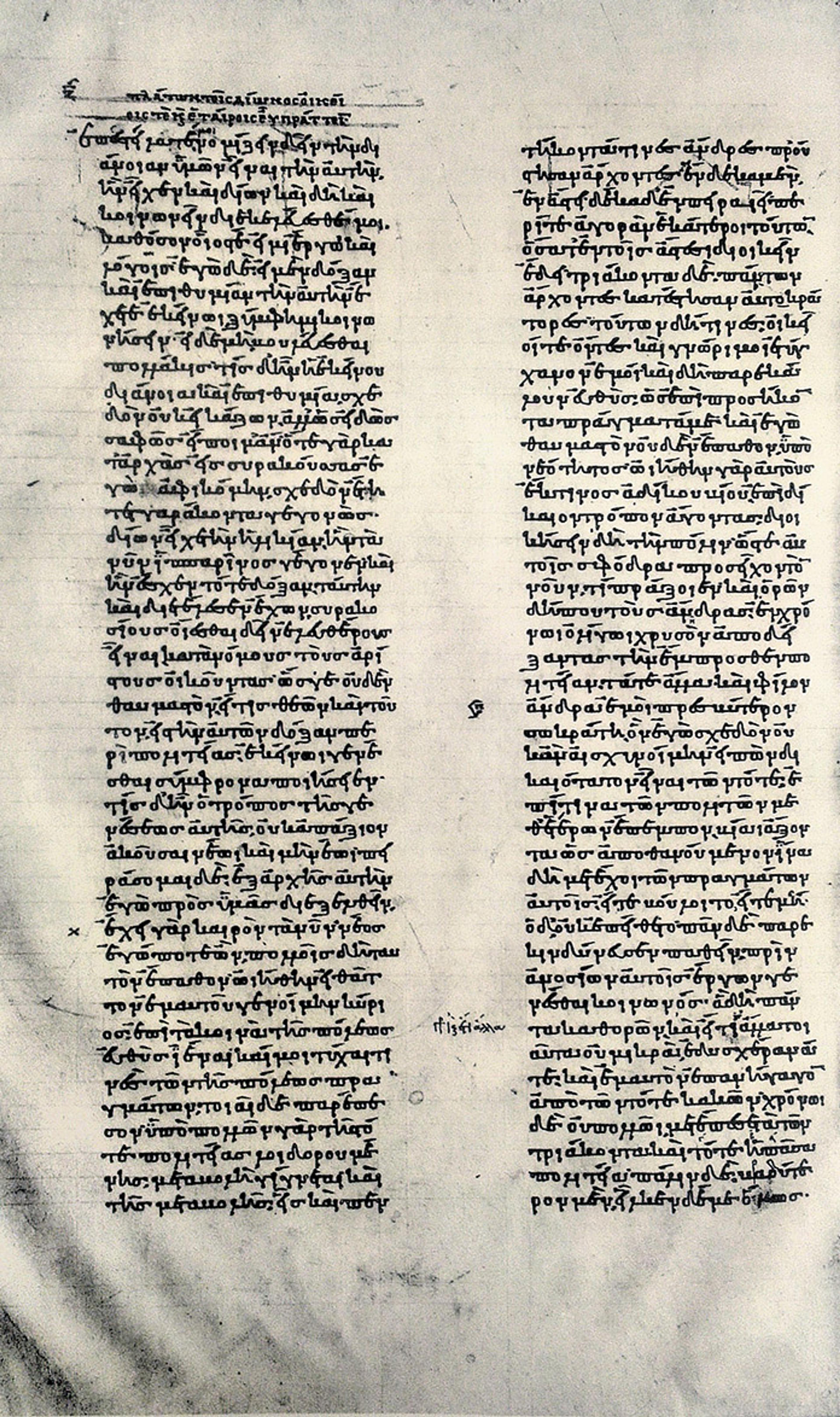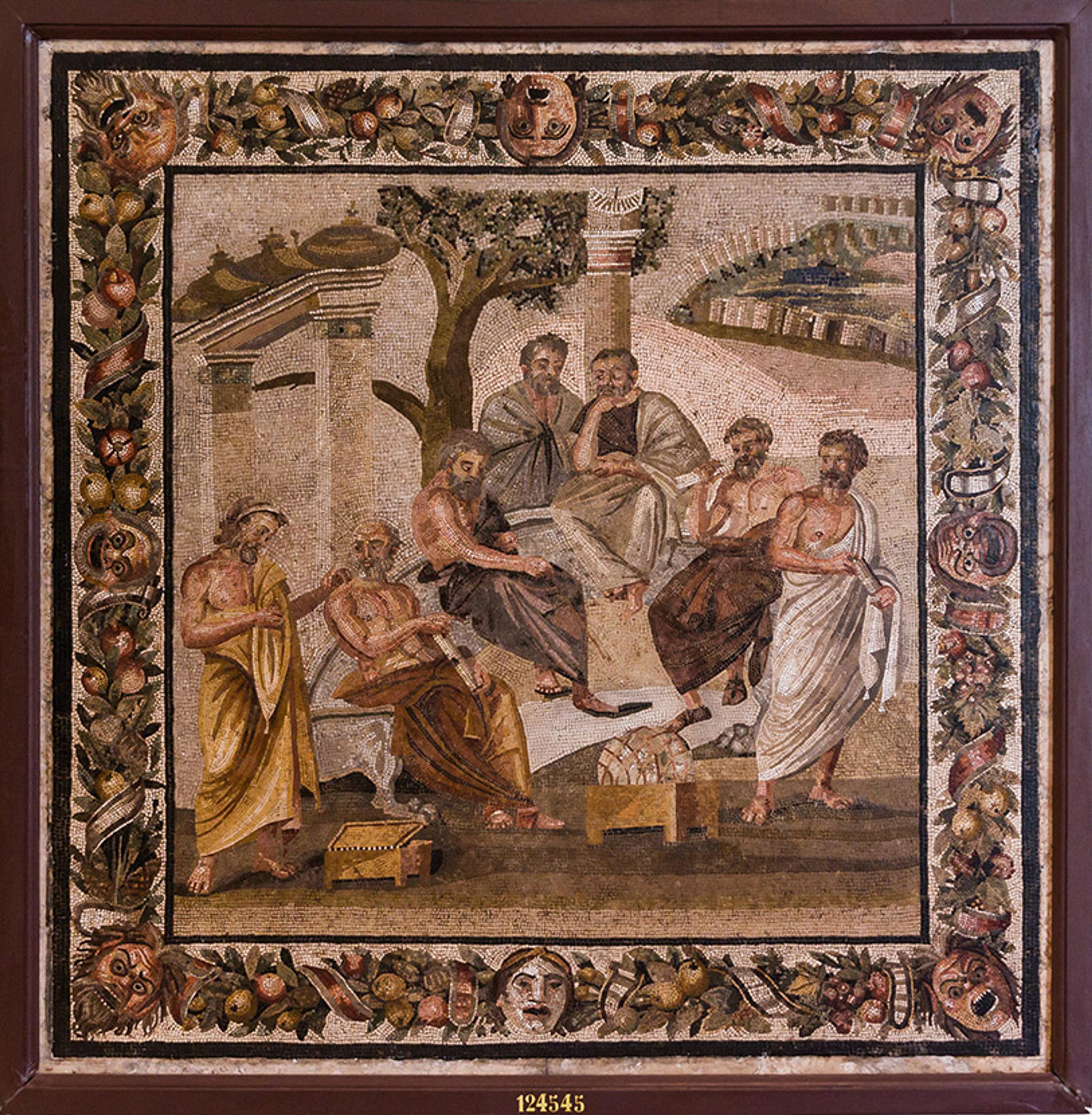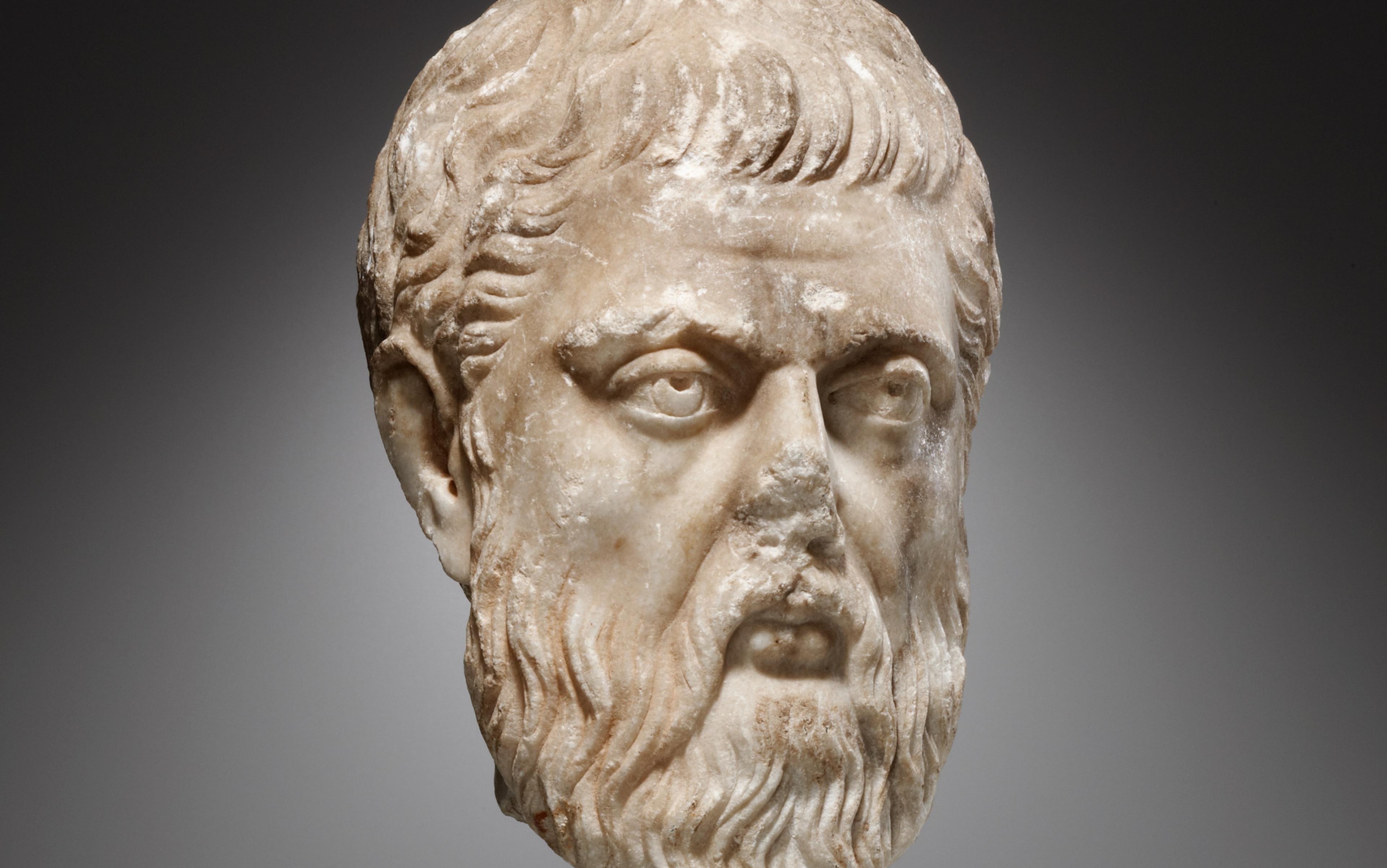What kind of person was Plato? The question is hard to answer, because Plato kept himself hidden in his dialogues, using his teacher, Socrates, as a mouthpiece for views that may or may not be his own. Readers of Plato might wish for autobiographical writings from him, or private letters in his own voice, to reveal the inner man and give insight into his philosophical views. That wish, in the eyes of some scholars, has been granted: a body of 13 ‘Platonic letters’, including a long and detailed document known as Seventh Letter, appears to show us the man behind the masks. In the Seventh Letter, Plato appears to tell us part of his own life story, explaining the reasons why he became a philosopher rather than a political leader, and outlines crucial points in his philosophy – a goldmine, it would seem, for those who want to know Plato as a person or to fully explore his system of thought.

But other scholars, today a majority, claim that the goldmine contains only iron pyrite. They dismiss the Seventh Letter as the work of a forger or fraud, and banish it from the Platonic corpus, along with all the other letters attributed to Plato. A book by two leading Plato authorities, Myles Burnyeat and Michael Frede, blared out this condemnation with its very title, The Pseudo-Platonic Seventh Letter (2015). In his portion of the composite volume, Burnyeat mounted a scathing attack on the letter’s contents, labelling them the work of someone ‘philosophically incompetent’. That is as much as to say that other revered Platonists who’ve accepted the letter as genuine, among them A E Taylor – whose landmark Plato: The Man and his Work (1926) is still regularly reprinted after nearly a century – lacked the means to distinguish between the ideas of a hack imposter and those of one of antiquity’s greatest minds.
What is the general reader or armchair philosopher, who seeks an understanding of Plato (the man or his work), to make of a controversy in which noted experts stand at opposite poles, and on which so much depends? Such readers may not even know the letters exist, for they’re distressingly hard to find among recent printed editions of Plato’s works. The Penguin Classics series, for many in the United States a go-to venue for Greek texts in translation, once packaged the Seventh Letter, along with another epistle, in a composite volume headlined by the dialogue Phaedrus. But when Penguin updated its Phaedrus translation in 2005, it dropped the two letters from the new volume without explanation. Had the opponents of the Platonic letters, their numbers having grown over preceding decades, succeeded in conclusively dismissing them?
I cannot produce an answer to the question of whether Plato wrote some of the Platonic letters (he certainly did not write them all), nor can anyone, for no such answer is possible ‘beyond a reasonable doubt’. I rather aim to explore the history of the debate, as confidence in the letters’ authenticity has waxed and waned over centuries, reaching its lowest ebb ever in recent decades but now, perhaps, rising once again. This history reveals a pervasive bias against Platonic authorship of the letters, based on a desire – unconscious, no doubt – to distance the exalted figure of Plato from their less-than-exalted content. Several of the letters relate to an episode in Plato’s life that Plato’s admirers find troubling: a failed attempt to collaborate with Dionysius II, the immensely powerful ruler of Syracuse, in an effort to reform the government of that Sicilian Greek city.
The image of Plato we cherish is that of a high-minded thinker who dwelled in the metaphysical realm. In his Republic, Plato described this realm as a place of eternal and perfect Forms, toward which true philosophers would direct every thought, as though beholding the Sun and escaping the ‘cave’ of earthly existence. However, the letters – including the all-important Seventh Letter – often depict a practical man of affairs, a man concerned with reputation, influence, even finance. To quote the classicist Friedrich Solmsen, writing in 1968 about his colleagues’ rejection of the Seventh Letter:
Plato, as he shows himself in this letter, is prepared for compromises between his principles and the realities of life and politics. He is altogether … more realistic than the ideal philosopher as we think we know him from the dialogues. In a word, Plato, if he wrote this letter, would be human.
A reluctance to accept Plato’s humanity has put a heavy thumb on the scale with which the authenticity question has been weighed.
There are 13 letters that have come down to us among the works of Plato, a corpus compiled and organised in ancient times. One of the 13 – the first – is demonstrably not by Plato, and this bad apple has raised doubts about the authenticity of the whole collection. Another reason for scepticism is the epistolary genre itself. Forgers, as we know, made good money in antiquity by creating spurious letters from famous people and selling them to libraries and collectors. We have great numbers of surviving forgeries, attributed to Socrates, Diogenes and other Greek sages but showing stylistic features out of step with the Greek of their authors’ times. All personal letters from Greek antiquity are therefore suspect, although some – such as a number of those attributed to Demosthenes – appear to be genuine.
All style analysts agree that comparison of the letters with Plato’s dialogues are complicated and risky
A comparison of the Platonic letters with known fakes reveals important differences. Where forgers tend to keep their letters brief and vague, for fear of committing errors that would give them away, Plato’s letters are detailed and in some cases – that of the Seventh Letter in particular – extremely long. This point stands out as crucial for the renowned Hellenist Robin Waterfield, among others. ‘Given Plato’s stature, it would be a bold forger who would pretend to know so much about his character and thinking,’ he writes, defending his decision to treat the Seventh Letter (along with two others) as legitimate in his biography Plato of Athens (forthcoming, 2023). Only a genius forger, it seems, would attempt an imposture on such a huge scale; one scholar has compared such an unlikely figure to Descartes’s demon, a being who creates illusions that can’t be distinguished from truth. Others, though, have noted that virtuosic forgers do on occasion arise and are very hard to detect.
The style of the Greek in the letters is another battleground on which the authenticity fight has been carried out. The judgments of experts range widely on which of the letters, if any, are authentically Platonic in style. Waterfield and Burnyeat, for example, stand at opposite poles regarding the Seventh Letter, the former asserting that ‘it would be impossible for a forger to imitate Plato’s style so faithfully’, while the latter supplies a list of phrases and usages he regards as distinctly unPlatonic. Whatever their differences, all style analysts agree that comparison of the letters with Plato’s dialogues are complicated and risky, because of generic distinctions. A writer presumably uses a different style in a letter, even an open one written for wide distribution (as several of the Platonic letters were), than in a dialogue, and in a private missive like the Thirteenth Letter – a document we shall return to – the gap would be wider still.
One computer-based study of Plato’s style has tried to overcome this problem, and its results have helped bolster the authenticity case. In the 1980s, Gerard Ledger devised a measure of style based on the frequency of terminal letters of words, a metric that, he supposed, would stay fairly constant within an author’s corpus, regardless of generic differences. Tests of the metric on texts that are known to be authentic produced convincing, but not perfect, results. When applied to Plato, Ledger’s system found that the four longest letters in the Platonic corpus, the only ones that he felt offered a large enough sample, were consistent with Plato’s style in the dialogues. Unfortunately, only scholars well versed in statistical methods were in a position to review his study, Re-counting Plato (1989), and these were divided in their assessments.

Just as arguments based on the form of the letters have not produced resolution, neither have those concerning their content. We have already seen how even expert Platonists, Taylor and Burnyeat, disagree on the philosophical points discussed in the Seventh Letter. Similar disagreements arise over how well the letters reflect historical circumstances surrounding Plato’s involvement with Dionysius II and with events in the city he ruled, Syracuse. Do the letters accord with what Plato could be expected to say, or what is known from other sources, about Dionysius and his overthrow – the subjects of nearly half of the letters, and all of the longest ones? Scholars disagree on the answer.
Plato met Dionysius the Younger in 367 BCE, shortly after the 30-year-old ruler had come to power. Dion, a senior counsellor and kinsman to Dionysius, had persuaded Plato, whom he had met and come to admire two decades before, to come to Syracuse, claiming that the new ruler was eager for philosophic instruction. The visit started off under promising auspices: the young ruler showed some enthusiasm for philosophy, and the court followed suit. But Dionysius grew suspicious of both Plato and Dion, whose close friendship he regarded as a threat, and advisors whispered rumours of conspiracy. Dionysius soon banished Dion and made moves regarding Plato that showed a certain mistrust. Plato promptly left Syracuse and returned to Athens, and resumed stewardship of his Academy, where Dion was now a student. It’s in the aftermath of that return that the Thirteenth Letter, which purports to be a personal missive sent by Plato to Dionysius, is set – the earliest of the collection, if it’s authentic, and also the first to be decried as a fraud.
The setting of the Thirteenth Letter is 365 BCE, shortly after Plato had left the court of Dionysius. Admirers of Plato would like to believe he departed in disgust at the moral condition of Dionysius, a man whom our sources depict as a drunk and an abuser of power. Indeed, an anecdote that arose in antiquity paints exactly this picture: Dionysius, on the eve of the split, requested that Plato not speak ill of him back at the Academy, prompting Plato’s haughty reply: ‘May the gods forbid that we have any reason to speak of you at all.’ Yet the tone of the Thirteenth Letter is surprisingly jocular and familiar – ‘playful’ is the word one translator uses. ‘Plato’ expresses warm friendship and offers to do certain favours for Dionysius, and even indicates a certain degree of financial dependence. He foresees upcoming expenses for which he may need Dionysius’ help – dowries for his orphaned nieces, and, soon enough, a funerary monument for his elderly mother (who may then have been about 90). He strongly implies that his financial needs are a result of his recent visit to Syracuse, hinting perhaps that the tyrant owes him compensation.
Modern scholars, for all their advanced philological tools, sometimes still react with moralistic repugnance
This is certainly not the way an idealised philosopher, the platonic Plato as we might call him, would write to a notorious despot. Already in the 15th century, the Florentine humanist Leonardo Bruni, who first translated the Platonic letters into Latin, banished the Thirteenth Letter from the collection, on characterological grounds. ‘I judged that the majesty of Plato should not be commingled with this letter,’ he wrote in his preface, referring also to the ‘triviality’ of the letter’s material concerns. Shortly afterward, the great Florentine Platonist Marsilio Ficino, who made a quasi-religious cult out of Plato’s memory, followed Bruni’s lead, omitting the Thirteenth Letter from his landmark 1484 Latin edition of Plato’s complete works. An editorial principle had been established: some letters might be discarded as fakes, and the standards by which they were judged might include their degree of Platonic ‘majesty’.
Modern scholars, for all their advanced philological tools, sometimes still react to the Thirteenth Letter with moralistic repugnance. One critic says that it gives Plato ‘base and petty motives’; another says it makes Plato a ‘contemptible cadger of money’; a third calls the document the ‘Bettelbrief eines Parasiten’ – the begging letter of a parasite. Character issues still have a claim on our response to the letters, as does the natural tendency to regard Plato’s ideals for the philosophic life, as described in the dialogues – a life detached from the material world and from accumulation of wealth – as part of Plato’s own practice.
To return to the earliest enquiries into the letters: Ficino also rejected the first of these – another missive purportedly sent by Plato to Dionysius – as a fraud, on grounds of stylistic inconsistency. This letter is adorned with verse quotations in an extremely unPlatonic manner, a red flag for forgery-hunters, and virtually no one has tried to ascribe it to Plato since Ficino’s time. So, by the year 1500, both the first and the last of the 13-letter series had been de-attributed, a circumstance that made it tempting to dismiss the entire collection – a move first made in the 18th century and then several times, with increasing vehemence, in the 19th. But before we reach that watershed, let us follow the thread of Plato’s involvement in Syracuse to its conclusion, since it’s that episode that gave rise, at least notionally, to the crucial Seventh Letter.
Dionysius was not done with Plato after 367. The tyrant, still intrigued by philosophy, importuned Plato to return to Syracuse, even sending a ship to Athens to pick him up. Plato was apprehensive but made the journey, mostly to plead the case for Dion’s recall but also still hoping, despite evidence to the contrary, that Dionysius was educable. He was soon disappointed on both counts. Dionysius failed a sort of character test Plato gave him, and also made Dion’s punishment worse by seizing the remainder of his estate. Plato again found himself suspected of conspiring against the tyrant and in some danger, but an urgent message to a nearby ruler, Archytas of Tarentum, secured his release and return to mainland Greece. There, he met with an outraged Dion, who had begun planning an expedition to take Syracuse by storm.
Dion, who’d been studying with Plato during part of his time in exile, took several Academy students with him on this expedition, though Plato himself held aloof. Attracting support from Dionysius’ foes as they went, Dion’s band succeeded in ousting the tyrant and installing Dion in power. But this revolution unleashed powerful passions in Syracuse, and Dion, a political moderate, became a target himself for radical reformers. As the city’s opposing factions did battle for control, one of the Academy members who’d fought beside Dion assassinated his former commander and tried to take over, but then was killed in turn. Syracuse descended into chaos, a situation that ‘Plato’ tried to remedy in the Seventh Letter and also the Eighth, another very long letter (though shorter than the Seventh). In those missives, addressed to Dion’s faction but meant for wide distribution, ‘Plato’ explains the whole course of his engagement with Syracuse and suggests ways that the city might move forward in peace.
The Seventh Letter has always been regarded as the lynchpin of the authorship debate and the one most likely to be Plato’s authentic work (or that of a close companion who knew Plato’s thoughts and intentions, which, for our purposes, would amount to the same thing). Defenders of the epistles argue that if one is genuine, the case for accepting others becomes much stronger, whereas sceptics say the reverse: if there are bad apples in the batch, it’s likely that all are rotten. This latter logic was employed by the great Oxford Platonist Benjamin Jowett, who in the mid-19th century dismissed the letters out of hand and banished them from his revealingly titled collection The Dialogues of Plato (for decades, the standard English translations, and still in wide use today). Jowett explained in his preface to the second edition of the work (1875) why it included no letters:
When one epistle out of a number is spurious, the remainder of the series cannot be admitted to be genuine … When all but one are spurious, overwhelming evidence is required of the one … But no one … would maintain that all the Epistles of Plato are genuine, and very few critics think that more than one of them is so.
That singular ‘one’ is of course the Seventh, here condemned by Jowett largely because of the company it keeps.
The letters had been let back into the corpus but only through the back door, as it were
The most revered philologist among Jowett’s contemporaries, Ulrich von Wilamowitz-Moellendorff, defied this logic and supported the genuineness of the Seventh Letter along with two others (the Sixth and Eighth), while rejecting the rest. The fact that a scholar of Wilamowitz’s expertise could find nothing unPlatonic in three epistles reveals the bias that informed Jowett’s reading of the collection. ‘[The letters] are full of egotism, self-assertion, affectation,’ Jowett wrote. ‘They abound in obscurities, irrelevancies, solecisms, pleonasms, inconsistencies, awkwardnesses of construction, wrong uses of words.’ Most damning of all was the charge of plagiarism Jowett levelled against the author of the letters, based on places where they echo phrases and sentences in the dialogues. The idea that such echoes might have arisen from Plato himself repeating his earlier thoughts, in a slightly altered form as befits an epistolary style, did not figure into his thinking.
Jowett’s mention of ‘egotism, self-assertion, affectation’ in this discussion carries forward what Bruni and Ficino had started four centuries earlier. Where those Renaissance editors had found the Thirteenth Letter unworthy of Plato as they conceived him – a noble soul, unable to have written anything small-minded or self-serving – Jowett found all the letters to be similarly unworthy, and especially the Seventh. For the Seventh Letter does indeed reveal the qualities he refers to. Whoever wrote it was clearly on the defensive regarding the Academy’s involvement in the disaster at Syracuse and eager to exonerate Plato from responsibility. The author even denies that Dion’s assassin was an Academy member, though we know from other sources that he was.
The Jowett Plato remained the standard English-language anthology until it was replaced by Princeton’s edition, The Collected Dialogues of Plato (1961), which carries an addendum to its title in smaller font, ‘including the Letters’. Taylor’s book had received multiple printings in the prior decades, and other studies, including one by the respected Platonist Glenn Morrow, had defended the authenticity of at least some of the letters, so the case for acceptance was stronger. Even so, the co-editor of the Princeton volume, Huntington Cairns, made no reference in his introduction to the inclusion of the letters and spoke throughout of ‘Plato’s dialogues’. The other co-editor, Edith Hamilton, did not supply a preface to the letters as she did to all the dialogues in the volume. The letters had been let back into the corpus but only through the back door, as it were, unacknowledged and uncommented on. The sequencing of the letters is also changed (again, without comment) so as to put the least likely genuine epistles last; interestingly, the Thirteenth Letter is not among this spurious group but comes first in the sequence, the place it occupies by its own putative date.
In the decades since the Princeton collection appeared, new salvos have been launched against the letters; studies published in 1966 and 1971, and the recent Burnyeat/Frede volume, rejected them all as fakes. Perhaps, with the upcoming publication of Waterfield’s biography, the pendulum has started to swing back again toward belief in Platonic authorship. ‘It is one of those issues that is subject to scholarly fashion,’ Waterfield notes in his cogent discussion of the authenticity debate. A chart compiled by a French editor of the letters shows how scepticism over the letters has moved like a sine wave through Platonist ranks.
One doesn’t need to accept the letters as genuine in order to see that the deck has been stacked against them by our enormous reverence for Plato. No doubt the critical tools of modern-day scholars surpass those of their Renaissance and Victorian forebears yet, even so, where no firm resolution can be achieved even by the computer, subjective factors inevitably come into play. Foremost among these is a dislike of seeing Plato cosying up to a tyrant like Dionysius or seeking to spin his involvement in Syracuse in ways that burnished his image. The human Plato seen in the letters is suspect in part because he does not conform to the portrait we want to behold, and that much of the Western tradition has created, of an ethereal sage who was part man and part god.






